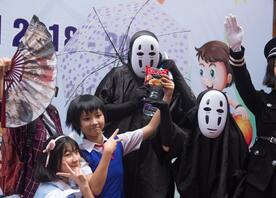Learn more about the beautiful art of bonsai, which has become synonymous with the country of Japan, in our comprehensive guide.

Intro
The Japanese art of bonsai dates back centuries and has fascinated international visitors to Japan for just as long. These beautiful trees have become an iconic symbol of Japan, not just for their beauty but for the skill and patience required to cultivate them. Although world-famous, many misconceptions still remain about bonsai and the best place to dispel them is right here in our comprehensive guide. We’ll tell you everything you need to know about bonsai and where you can travel to view bonsai in Japan using the JR Pass. Bonsai is both a hobby and an artform and has seen its popularity flourish in recent years thanks to both its aesthetic beauty as well as the many benefits it can bring practitioners, from mindfulness to greater calm and focus. Whether you’re a bonsai beginner looking to learn how to cultivate these tiny trees yourself, or you just want to travel to Japan to view their beauty for yourself, we’ve got you covered. Let’s begin.

What Is Bonsai?
The Japanese word ‘bon-sai’ essentially translates as ‘planted in a basin’ or ‘potted planting’. While the word has come to represent small, beautifully cultivated trees, this is actually one of the biggest misconceptions around bonsai. Bonsai are not miniature trees at all. They are exactly the same as the trees in the forest. They have simply been planted in a container and expertly trimmed and pruned to remain small while mimicking the shape and style of a fully-grown tree. Similarly, bonsai is not a breed of tree, but rather the technique used to cultivate it. Bonsai trees therefore can technically be any species, including pine, maple, elm, cherry, juniper, beech, and plum. They can also range in size from a few inches to several feet. While trees with smaller leaves tend to be preferred, they can ultimately be any species, age, or size, if cultivated correctly. Bonsai practitioners use a number of special tools. These include:
- Pruning shears
- Bonsai scissors
- Wire cutter
- Root rake
Today, bonsai is simultaneously a horticultural hobby, an aesthetic artform, and a spiritual endeavour, linked to the concept of wabi sabi (simple, refined, and pure art). It is practised both by bonsai masters as well as amateur enthusiasts and newcomers alike.

A Brief History of Bonsai
Bonsai dates back around 1,000 years with some of the earliest examples in Japan being recorded in the 12th century. The Japanese artform may have been partly inspired by the Chinese ‘penjing’ or ‘potted gardens’ although they were more pictorial rather than poetic. Japanese monks and craftspeople sought to elevate the form into an art and thus bonsai was born. While it existed in Japan for centuries, it wasn’t until the Meiji era (1868-1912) that bonsai took on the form and overall appearance that it is known for today. It was during this period that Japanese missionaries took the artform around the world and it became famous. This continued throughout the 20th century as Japanese practitioners of bonsai began to teach it in locations around the world. Today, classical bonsai remains popular in Japan and there are even live shows and public demonstrations in which it is practised in front of an audience.

Visit Omiya Bonsai Village in Japan
If you want to see authentic bonsai in Japan during your visit, there are numerous gardens and museums where you can go to view these beautiful creations as well as classes where you can learn the art for yourself. One of these places is Omiya Bonsai Village, which can be reached using the Japan Rail Pass. The location of a bonsai museum and a number of bonsai nurseries, Omiya Bonsai Village in Saitama dates back to 1925 and is an ideal place to learn more about bonsai. Omiya Bonsai Museum exists to educate visitors in bonsai and features English audio guides for western travellers keen to find out more. The bonsai nurseries in Omiya village are open to the public and the practitioners there are typically happy to answer any questions you might have about the artform. Omiya Bonsai Village is open every day apart from Thursdays and national holidays. You can reach the village on the JR Utsunomiya Line using the JR Pass. It is between Omiya Koen Station and Toro Station and just five minutes from both. You can also use the Kagayaki Shinkansen to travel easily from Tokyo to Omiya. This is covered by the Japan Rail Pass.
Another excellent destination for admirers of bonsai is Shunkaen Bonsai Museum in Tokyo, which was founded in 2002 by bonsai master, Kunio Kobayashi. It features more than 1,000 bonsai trees (one of which - standing in front of the house - is said to be 1,000 years old) and attracts over 10,000 international visitors each year. You’ll find Shunkaen Bonsai Museum in the Edogawa ward of Tokyo.Bonus Recommendations
If you’re interested in Japan’s traditional culture and history, we have a number of similar bonus recommendations for you to read about.
- Sumo is quintessentially Japanese. Big, bold, steeped in history and tradition, and completely unique. Sumo is so synonymous with Japan, it’s hard to imagine it existing anywhere else and at the same time, it’s also quite a surprising national sport for a country with a reputation for being understated and polite. Find out what it’s like to attend a sumo match and how to get tickets in our Guide to Sumo.
- At its core, kendo or the “way of the sword” teaches techniques and styles of swordsmanship to participants using bamboo swords and protective armour. With ties to the samurai who fought and served the lords of Japan for centuries, kendo is a discipline with a great sense of tradition. You can read more in our blog post, How to Experience the Japanese Martial Art of Kendo.
- Although the art of calligraphy is found in many cultures across the world, in Japan the practice is known as shodo. Translated as “the way of writing", shodo is the practice of artistically handwriting the Japanese language in ink. This deliberate and Zen-like artform involves painting Japanese characters known as kanji and kana, and is created with precise and ordered brush strokes. Despite how simple it may sound, there’s a great deal of tradition, culture and spirituality woven into this ancient practice. Our guide, How to Learn the Art of Japanese Calligraphy, can tell you more.
- Bonsai definitely has strong spiritual ties and is one of the many ways you can connect with your own spiritual side while visiting Japan. From mindfulness and meditation to learning more about Japan’s Buddhist and Shinto religions, you can find out more in our Spiritual Guide to Japan.





